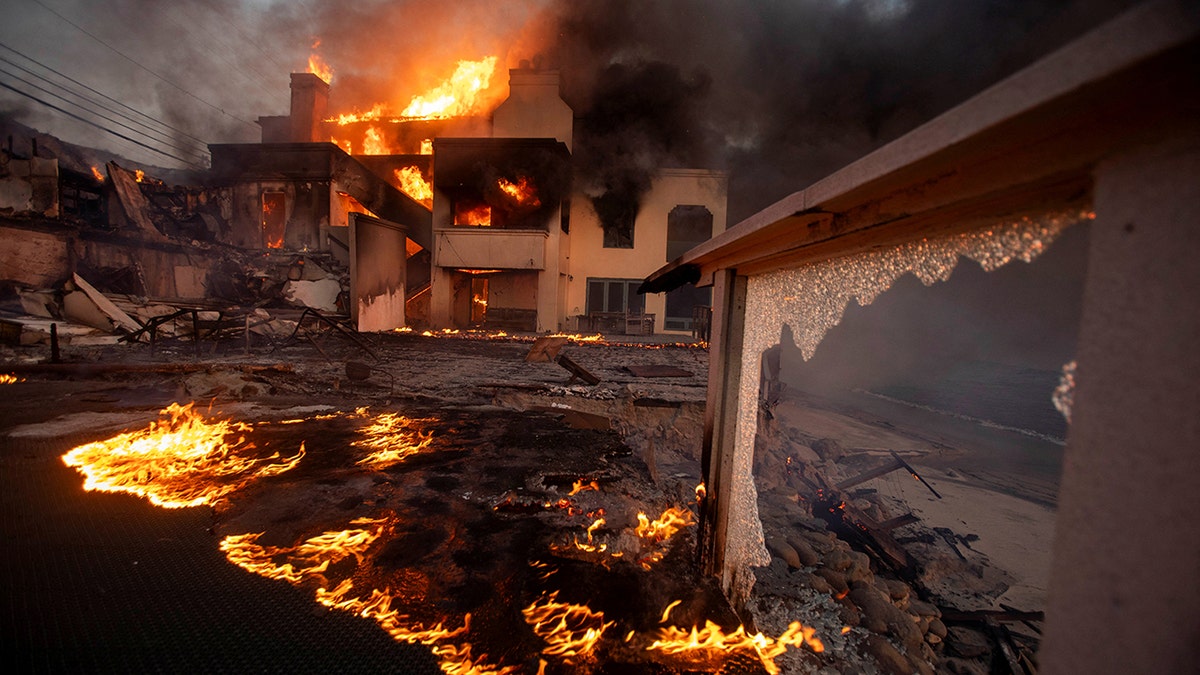NEWYou can now listen to Fox News articles!
It’s fire season again in California and again, returning like the sunrise, politicians are blaming the extent of the fires on climate change. A representative example comes from Sen. Bernie Sanders’ X account, where he posts:
“…Eight months since the area has seen rain.
The scale of damage and loss is unimaginable.
Climate change is real, not “a hoax.”
Donald Trump must treat this like the existential crisis it is.”
Of course, the good senator from Vermont lives in a place with hot, humid summers and cold winters, with precipitation peaking in June and July.
SECOND LAS ANGELES-AREA FIRE BREAKS OUT AS FIREFIGHTERS BATTLE RAGING PALISADES INFERNO
Southern California has a very different climate from Vermont – it’s why, until recent years of leftwing misrule, Americans moved in droves to California. Los Angeles’ climate is described as “Mediterranean,” meaning that it enjoys low humidity and scant rainfall, with some 80% of precipitation typically falling over four or five months in the winter.
When Sen. Sanders says that the region has been without rainfall for eight months, my response, as a former resident of Southern California for 31 years before moving to Texas, is, so? That’s why people live there – endless sunny days.
Do Sanders and the myriad other politicians decrying “climate change” have a valid point? Simply, no.
In 1834, a 19-year-old Richard Henry Dana Jr. boarded a ship in Boston and sailed to California. Dana Point in Southern California is his namesake. On his return, he flipped his diary into a book, “Two Years Before the Mast.” In it, he describes the area that’s burning now:
“The only thing which diminishes its beauty is, that the hills have no large trees upon them, they having been all burnt by a great fire which swept them off about a dozen years before, and they had not yet grown up again. The fire was described to me by an inhabitant, as having been a very terrible and magnificent sight. The air of the whole valley was so heated that the people were obliged to leave the town and take up their quarters for several days upon the beach.”
Was this “terrible and magnificent” fire that happened about 1823 driven by “climate change” or something else?
I retired from the California National Guard in 2007. The Guard jokes that California’s four seasons are “Flood, fire, earthquake, and riot.”
The coastal hills of Southern California are naturally covered by chaparral. These plants have adapted to fire, but, due to human activity – arson, power line faults, car fires, and the like – fires happen with greater frequency. Pine trees cover much of the foothills in the higher elevations. These too, become vulnerable to fire before the start of the rainy season.
In both cases, property owners are advised – often ordered – to clear a 100-foot defensible perimeter around their homes and commercial properties. Not enough do. Power companies, under tremendous financial pressure to produce more wind and solar power, neglect costly power line maintenance as well.
And environmental lawsuits and tightening air pollution rules too frequently prevent or delay the prescribed burns needed to keep people safe.
Up north, where the forests are dense, the problem is different. There, federal and state rules have devastated the timber industry since the 1990s. But every year, whether it’s harvested or not, the pine trees grow. Without active management, especially on the federal lands that make up vast swaths of the state, the trees grow far too close together – often up to 30 times the density needed for a healthy forest. This makes the trees far more susceptible to California’s typically long dry spells.
CLICK HERE FOR MORE FOX NEWS OPINION
Of note, prior to the California gold rush of 1849, the local population would routinely set fires to promote the growth of grasslands, which generated more food than did the forest. George E. Gruell, a veteran wildlife biologist, had the notion to compare the large photographic record made at the onset of mass migration to California after the discovery of gold and found that California looked much different than today. Photo after photo revealed rolling hills of grass, a few lone live oak and isolated stands of pine trees, often following creek beds. More than 100 years later, after forest harvesting and management gave way to fire suppression and no harvesting, the same vistas were seen to be choked with trees.
CLICK HERE TO GET THE FOX NEWS APP
But, of course, it’s all “climate change” – that magic incantation that absolves politicians of blame for their policies while providing a handy excuse to impose centralized government control of energy and thus, life itself.
There’s a deeper irony in this, however, and that’s this: even if climate change were to blame for California’s fires the solution is the same: reduce the available fuel that feeds the wildfires, clear brush from around homes and maintain power lines or, when possible in urban areas, bury them.
Opinion News on Fox News
Read the full article .


